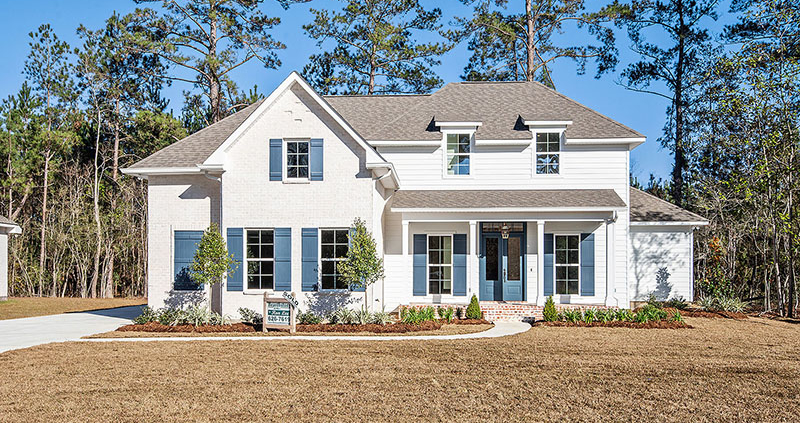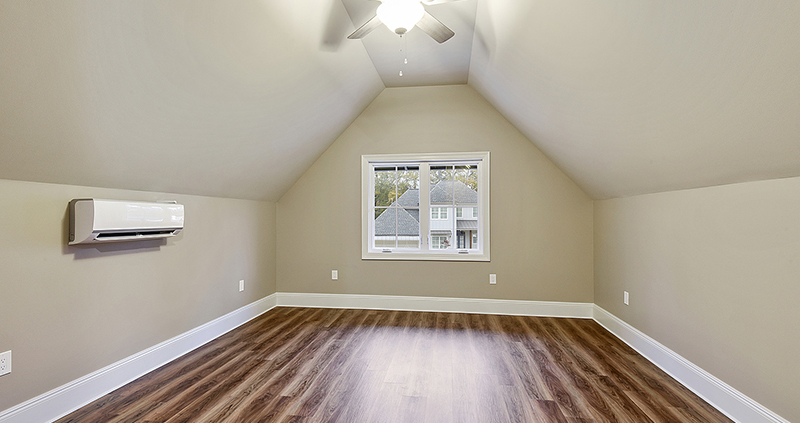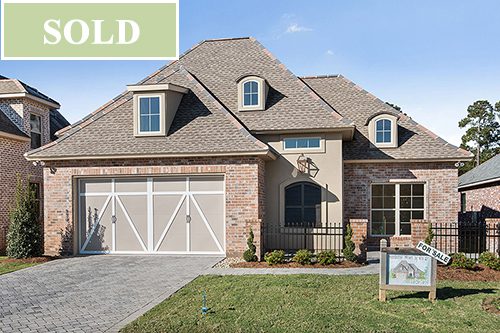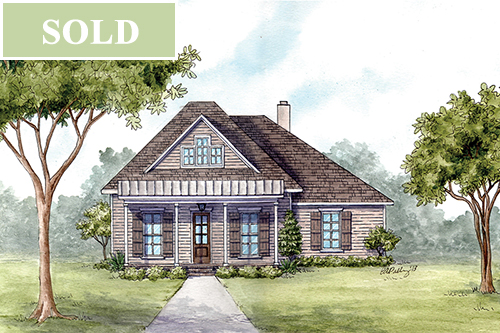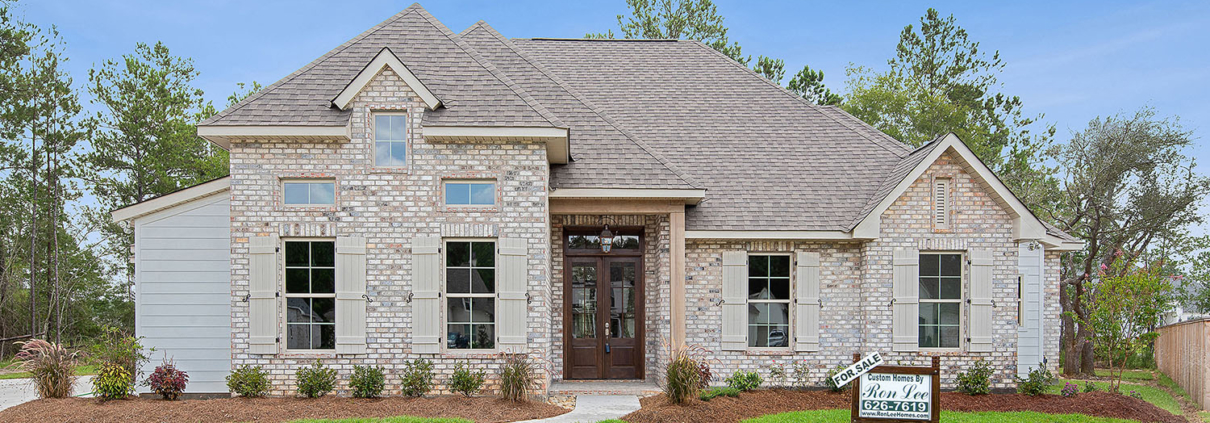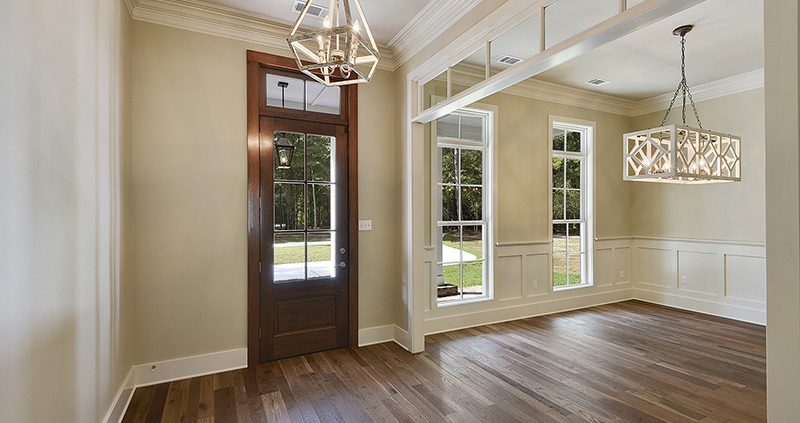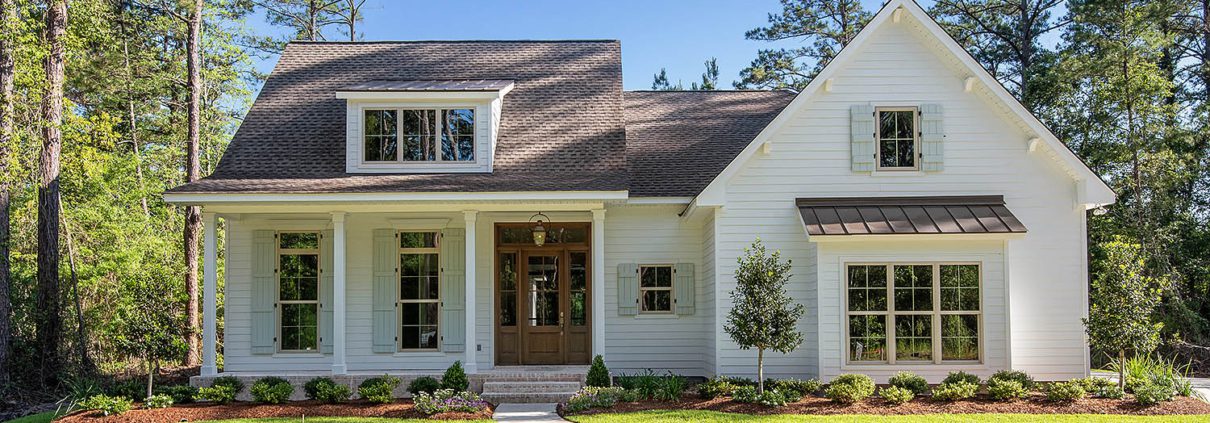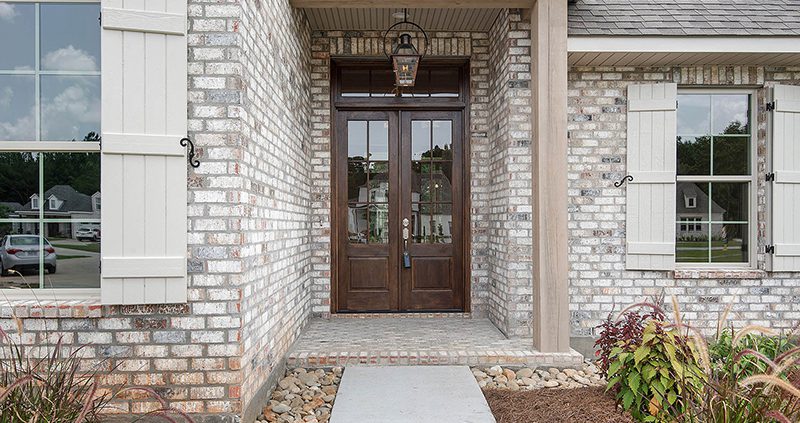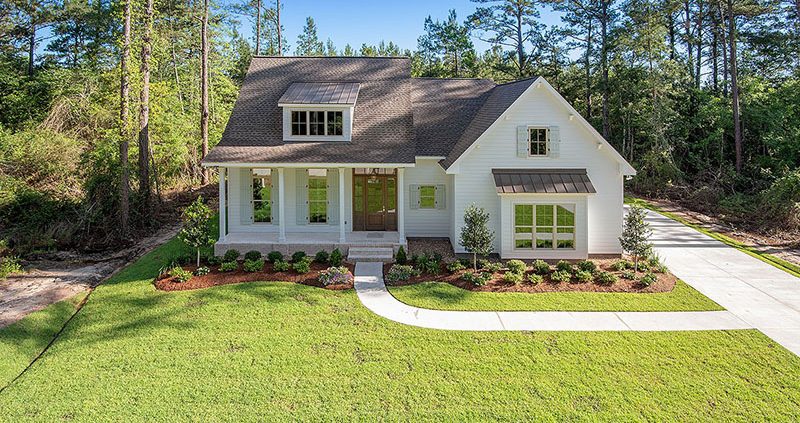This September was reported to be 15.5% higher year-over-year due to the lower mortgage rates. The National Association of Home Builders’ data shows that sales were 7.2% higher in the first nine  months of 2019 than those reported in the first nine months of 2018. This first nine months this year brought in 527,000 sales beating the 491,000 sales reported for the same time frame in 2018.
months of 2019 than those reported in the first nine months of 2018. This first nine months this year brought in 527,000 sales beating the 491,000 sales reported for the same time frame in 2018.
Signs show sales volume increasing with the more new homes that are reported being built. New home sales for the first nine months of 2019 were up 12.8% in the South, and 7.3% in the West compared to the first nine months of last year.
This fall is a great time to purchase a new home with the median new home sales price at $299,400. Right now, nearly 15% of newly built homes are priced under $200,000! This buyers market will not last, so if you are in the market to purchase a home, buy your new home before the new year.
Click Here For the Source of the Information.
The year 2006 brought one of the most profitable side jobs for Americans, flipping houses. In fact, that year, it was reported that one in ever ten homes purchased were to flip. In 2008, it all came crashing down. Many went bankrupt because they were stuck with owning flips that were on the fast pace to a dramatic depreciation in value. The housing crash not only affected the housing market, but also caused Americans to loose their jobs and businesses. Fortunately things are turning around for the housing market. Today, housing stocks are one of the best investments out there.
 According to Forbes.com housing stocks are currently booming. NVR Inc., a homebuilder, is a slam dunk. It was reported that in February 2019, NVR stocks were at a 45% gain beating the S&P 500 at 10%. Those that purchased the stock back in February have made a lot of money. According to the site’s research, housing stocks will be the way to go for years to come.
According to Forbes.com housing stocks are currently booming. NVR Inc., a homebuilder, is a slam dunk. It was reported that in February 2019, NVR stocks were at a 45% gain beating the S&P 500 at 10%. Those that purchased the stock back in February have made a lot of money. According to the site’s research, housing stocks will be the way to go for years to come.
 Another two stocks to invest in are Vulcan Materials (VMC) and Martin Marietta Materials (MLM). Both companies sell concrete and gravel which is used a lot in the house building industry. Homebuilders use both for housing foundations, roads and sidewalks. According to the chart, these two stocks have rocketed in the past year. Revenues in the company are rising and hitting all-time highs.
Another two stocks to invest in are Vulcan Materials (VMC) and Martin Marietta Materials (MLM). Both companies sell concrete and gravel which is used a lot in the house building industry. Homebuilders use both for housing foundations, roads and sidewalks. According to the chart, these two stocks have rocketed in the past year. Revenues in the company are rising and hitting all-time highs.
Housing expert Barry Habib, founder and CEO of MBS Highway,  has the insider knowledge from the top players in the US housing market. The biggest issue he sees is supply and demand. Since 2009, only 900,000 homes have been built per year. Habib says this is the lowest inventory since the 1950’s. This is one of the biggest housing shortages we have had. He says that with existing inventory, it would take under six months to sell everything currently on the market.
has the insider knowledge from the top players in the US housing market. The biggest issue he sees is supply and demand. Since 2009, only 900,000 homes have been built per year. Habib says this is the lowest inventory since the 1950’s. This is one of the biggest housing shortages we have had. He says that with existing inventory, it would take under six months to sell everything currently on the market.
“The most important driver of home prices is supply and demand. And right now, there is a chronic undersupply of homes in America,” Habib stated.
Habib believes the market is about to be flooded with homebuyers. Millennials have been recorded to be the biggest generation the country has seen. The National Association of Realtors states that one in three homebuyers today is a Millennial.
“On average, folks buy their first home at age 33. Guess what the median age of Millennials is right now? 34. In the past year or two, the first wave of young homebuyers came into the market. But every year for the next decade, tens of millions of Millennials will hit home-buying age.”
This flood will definitely play an important roll in the prices of homes. Supply and demand is the most important driver for home prices. With such a tight supply in inventory the housing market will continue to boom.
What does that mean for homebuilders? They will have job security for a while to come. This fall, new home starts rose to their highest level since the summer of 2007 and building permits are at the highest level since the spring of 2007. Habib believes “the American housing boom has years to run.”
Click Here For the Source of the Information.
There are many different kinds of mortgages to choose when purchasing a home. Not every mortgage is right for you. Here are some tips to follow when choosing which mortgage best fits your needs.
Do your homework. You will want to first research special mortgage programs. There are a great number of programs out there which can assist first-time home buyers. Programs can help with down payments, lower your interest rate or help with other expenses you might have such as a student loan. These programs can help you along the way by allowing you to build equity in your home. Professionals can help with finding the best program to suit your needs, check with your lender or Realtor.
Go with a local. Big programs such as federal programs are more well known but there are many programs for first time home buyers through their city or state. Detroit and Baltimore have used first-time home buyer programs to promote revitalization in their downtown areas. Many states have used programs to urge first-time homebuyers to purchase their first home in rural areas. Always check your city or state government’s websites to see if there are any programs available to assist you. Another resource would be the community development or housing department.
Don’t overlook your mortgage rate. An obvious focal point is the price of your home. This is not the only thing you should focus on. Your mortgage rate is just as important. This number can tell you how much you will pay in interest every month. The lower the rate, the less you will pay. The easiest way to lower your rate is by a good credit score. Not every first-time buyer has a solid 20 % to put down with an excellent credit score. Many lenders allow you to purchase discount points with can lower your interest rate. Purchasing points is prepaying your interest rate which lowers your overall interest rate by approximately .25%. There are positives and negatives to buying down your rate with discount points. Your lender can help you with this decision.
There’s always an adjustable-rate mortgage (ARM). This can be a great way to start off your first home buying experience. How an ARM works is simple. You will start off with a set period with a fixed rate which will then adjust after a certain period of time. In other words, if you have a 5/1 ARM, you will have a fixed rate for 5 years and then after the 5 years, your interest rate will adjust every year. The rates will not always rise but can also fall. If the rates have gone down you could end up paying less but if it goes up, you will pay more. This is a great way for a first-time to use the first 5 years to improve credit, lower debt and raise your income in order to get a 15 or 30-year fixed-rate mortgage.
Just like an employer interviews for the right employee, the same goes for the right lender. You need to talk to several lenders about getting a mortgage. Shopping around can give you negotiating power and the lowest mortgage rate. You will want to research average rates for your area.
Have your paperwork in order. When applying for a mortgage, your lender will want your monetary life story. Get all your documents together before meeting with a lender. Many lenders will not lock in a rate and start your application until they have all your documents.
Keep your finances the same. Do not make a huge financial change when you are in the process of obtaining a mortgage. Do not apply for a new credit card, get a new car loan, or change jobs. If you do this, the mortgage lender will have to start your application process all over again. You will need to wait even longer to close on your new home.
Getting a loan for a home can be a daunting task but if you do your due diligence, the process will be a lot less painful in the end.
Click Here For the Source of the Information.
 Buying a home can be an exciting but daunting experience. Getting the right price is just one of the pieces to the negotiation puzzle. Here are eight things you can negotiate other than just the purchase price.
Buying a home can be an exciting but daunting experience. Getting the right price is just one of the pieces to the negotiation puzzle. Here are eight things you can negotiate other than just the purchase price.
Number one is the closing date. Some buyers are in a hurry to close while others need more time. Many don’t realize that the closing date can be negotiated.
Buyers might need to move in quickly because of a new job or might need to push the date back because their kids need to finish up the current school year. As long as the date is good for both the seller and buyer the time table can be flexible.
Second comes the closing cost. There are many factors that play into the closing cost. These include the inspection fees, appraisal fees, loan origination fees, recording fees and the lender title insurance. The buyer is typically responsible for these one-time fees that are paid on the closing day. The buyer can negotiate for the seller to pay all or some of the closing cost. This has become more common as the home prices have continued to rise.
Third are the contingencies. Contingencies are basically an agreement on things that must be met before the real estate contract becomes binding. Contingencies can be based on financing, the home inspection, repairs, appraisals and more. A common contingency is the sale of a potential buyers old home before they can close on the home under contract.
Inspections are the fourth thing on the list and are an important factor when purchasing a home. No buyer should purchase a home without a professional inspection. If a seller refuses an inspection and wants the buyer to purchase as is, this can be a red flag.
The next thing that can be negotiated is repairs. Home inspections are there for the buyer’s protection. They can potentially reveal problems or defects that need to be resolved. The seller and buyer can negotiate who is responsible for repairs and what needs to be completed before the sale is finalized. Ways in which you can work this out with a seller is for them to make the repairs at their cost or negotiate a lower sales price of the home.
Number six is the appliances. Large appliances are usually included in this negotiation tactic. Make sure to ask what appliances the seller is willing to include in the sale of the home. A buyer should always know exactly what they are purchasing. It can work to both advantages. A seller might be willing to negotiate the washer and dryer into the sale or the buyer might want to make sure the seller does not leave a certain large appliance behind.
Seven is the taxes. When a property changes hands, many states require transfer taxes and fees. The buyer or seller can pay these fees. Before a real estate contract goes through, it should be decided who will pay the cost. In a seller’s market, the buyer usually pays the taxes and in a buyer’s market the buyer insists that the seller pays the taxes. A great way to get a leg up on the competition is to offer to pay the taxes as the buyer.
Last is the furniture. Usually the seller takes all the furniture when they sell their home. If a buyer loves the decor or a piece of furniture they can negotiate it into the sale of the home.
When negotiating on the purchase of a home it is always wise to use a Realtor. A real estate agent always has great bargaining skills and can get you the best deal on a home.
Click Here For the Source of the Information.
 According to Sam Khater, Freddie Mac’s chief economist, the lower mortgage rates are getting positive results from home buyers across the nation. Mortgage applications for home purchases are rising steadily and have seen the highest year-over-year change since the fall of 2017.
According to Sam Khater, Freddie Mac’s chief economist, the lower mortgage rates are getting positive results from home buyers across the nation. Mortgage applications for home purchases are rising steadily and have seen the highest year-over-year change since the fall of 2017.
Here is a look at the national averages with mortgage rates Freddie Mac reported for the week ending July 25, 2019:
The 30-year fixed rate mortgages averaged 3.75% with an average 0.5 point. This was a dip from the week prior which was at an average of 3.81%. July of 2018 reported 30-year rates averaged 4.54%.
The 15-year fixed mortgages reported as the following. They averaged 3.18%, with an average 0.5 point. Again, this was a lower than last week’s which reported 3.23% average. This time last year the 15-year rates averaged 4.02%.
The average 5-year hybrid adjustable-rate mortgages was 3.47%, with an average 0.4 point. Another fall from last week’s 3.48% average. A year ago the 5-year hybrid adjustable-rate mortgages (ARMs) averaged 3.87%
“While the improvement has yet to impact home sales, there’s a clear firming of purchase demand that should translate into higher home sales in the second half of this year,” Khater says.
Click Here For the Source of the Information.
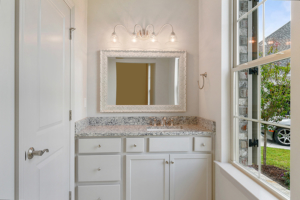 Most Americans are affected by interest rates whether through a mortgage or credit cards. July 2019, marked the first time the Federal Reserve lowered interest rates since the crash in 2008. Pressured by President Trump and the possibility of an economic downturn, policymakers voted 8-2 for the small cut in federal rates.
Most Americans are affected by interest rates whether through a mortgage or credit cards. July 2019, marked the first time the Federal Reserve lowered interest rates since the crash in 2008. Pressured by President Trump and the possibility of an economic downturn, policymakers voted 8-2 for the small cut in federal rates.
“Should trade negotiations turn positive and economic data, especially inflation, firm in coming months, July’s move could be a one-and-done easing,” said nationwide senior economist Ben Ayers in a note. “Still, given the slowing trajectory for the economy and precedence from previous mid-expansion easing cycles, a further rate cut (or two) by year-end may occur.”
Investors are eager to see the out turn of the rate cut and are hoping for more rate cuts in the near future. They are watching for any clues that there will be a future rate cut. Wall Street has already been pricing another rate cut for the year end.
The economy is strong as seen in job gains and retail and economic growth on the rise. If there is another cut, the Federal Reserve will need to justify their decision.
Policymakers vocalized that they will “continue to monitor” any data which would have an effect on the US economy and “act as appropriate” to retain “the country’s longest economic expansion in history.” The central bank believes these steps are necessary to keep America’s economy strong.
Click Here For the Source of the Information.
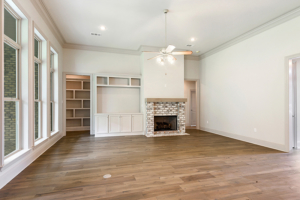 We all know that buying a home is a big step for anyone especially for someone who is doing it for the first time. A bipartisan House bill passed at the beginning of July 2019 that will help ease the first time buyer’s anxiety over the homebuying process. The bill will allow first-time homebuyers to pay less closing cost if they go through homeownership counseling.
We all know that buying a home is a big step for anyone especially for someone who is doing it for the first time. A bipartisan House bill passed at the beginning of July 2019 that will help ease the first time buyer’s anxiety over the homebuying process. The bill will allow first-time homebuyers to pay less closing cost if they go through homeownership counseling.
“The idea behind the legislation is that counseling should improve loan performance and make people better borrowers,” said Pete Mills, senior vice president of residential policy for the Mortgage Bankers Association, which generally supports the bill.
The Housing Financial Literacy Act applies to mortgages backed by the Federal Housing Administration and is a tool that can be used for first-time homebuyers. Those eligible, will go through counseling which teaches them ways to be financially responsible homeowners. Once completed, they would receive a discount on the upfront mortgage insurance that is required on FHA loans.
First-time homebuyers tend to go with FHA loans because of the less-stringent requirements. Although the requirements are more lax than a conventional loan it requires more money for insurance premiums because the FHA loan is riskier. Today the delinquency rate on FHA loans is around 9% where the delinquency rate on a conventional loan is only around 3%.
The risk for the lenders on an FHA tends to be higher because a good many of the first-time homebuyers using an FHA have low or moderate incomes with lower credit scores. Lenders require those using the FHA to pay mortgage insurance along with an upfront mortgage insurance premium. Currently the upfront amount paid is 1.75% of the base loan amount. If a borrower does not have the money upfront to pay the premium, the cost can be rolled into the loan. The Housing Financial Literacy Act allows a discount of 25 basis points making the premium amount 1.5% of the base loan amount instead of the 1.75%. As an example, the upfront mortgage premium on a $200,000 loan would be $3,500 but with the discount the first-time buyer would only need to pay $3,000.
Hopefully if put into law, the bill will not only help reduce cost, but also give first-time homebuyers the tools to become financially responsible homeowners.
Click Here For the Source of the Information.
 When purchasing a home, the majority of homebuyers will purchase using a mortgage. Your credit and your down payment will affect your monthly payment and mortgage rate. The more you put down the lower your monthly payment will be making it easier to build more equity in a shorter amount of time. Although this is a plus, it can back-fire when a homeowner puts down most of their savings on a downpayment leaving no funds for home maintenance or emergencies.
When purchasing a home, the majority of homebuyers will purchase using a mortgage. Your credit and your down payment will affect your monthly payment and mortgage rate. The more you put down the lower your monthly payment will be making it easier to build more equity in a shorter amount of time. Although this is a plus, it can back-fire when a homeowner puts down most of their savings on a downpayment leaving no funds for home maintenance or emergencies.
“There’s really no one-size-fits-all solution,” says Jason Speciner, a certified financial planner in Fort Collins, Colorado.
Find a happy balance. Figure out how much you can put down to lower payments without leaving the finances high and dry for those upgrades, maintenance issues, life emergencies or life in general. Here are a few pointers to follow when deciding the amount to put down on a home.
Do the benefits outweigh the negatives? Future homeowners are surprised at the differences in the monthly mortgage payments when calculating different down payment amounts. If a higher down payment would mean a borrower could avoid mortgage insurance this would definitely be a plus. Mortgage insurance is a monthly expense added on top of the monthly mortgage payment making it a much slower process of building equity. There are times when a higher downpayment does not reap any benefits. If it leaves a future homeowner strapped for cash it is just not worth it. If someone just needs to put down 3% for a conventional loan but tries to scrape together 5% to lower the monthly payment it just doesn’t make enough difference and cannot be justified if it leaves a future homeowner strapped.
Always be mindful of the effects a higher downpayment will have on your financial plan. According to the Bank of the West’s 2018 Millennial Study, 29% of homeowners between the ages of 21 to 34 borrowed from their retirement accounts to make a large downpayment on a home. Taking from Peter to pay Paul is not always the greatest solution. Taking money from your 401(k) is definitely risky. If you loose your job, the money must be put back into the 401(k) before the next yearly tax filing or it will be treated as ordinary income with a 10% penalty. An Roth IRA is not as risky, but when taking out money from your IRA you are losing tax-free growth.
Always expect the unexpected. You always want a cushion to fall back on. Leave some cash in the bank for emergencies. Sadly NerdWallet’s 2019 Home Buyer Report, says that 34% of recent first-time home buyers feel they are no longer financially secure after purchasing their home. Homownership includes many expenses that first time homebuyers might not have planned for. Do not drain your savings on a down payment and closing costs.
Speciner says it best, “Emergency reserves are for ‘Oh, shoot’ moments.”
Click Here For the Source of the Information.
Even with the sales numbers for new homes for sale during May, 2019, not all in, an annualized report of new home sales shows a 3.8% increase, year-over-year of new home sales. Because many different firms only look at sales numbers through the lens of how they compare to the previous month’s sales, the reports of new home sales growth slowing have been inaccurate when taken into account of adjusting for seasonal fluctuations and year-over-year numbers.
In 2018, two things affected new home sales – the increases in interest rates throughout the year and a slight stock market “bear market” which slowed down the economy overall. The beginning of 2019 shows a boost after the slowdown, and it also doesn’t show any signs of wavering throughout the rest of the year according to Forbes.com economic contributor John S. Tobey (click here to read the article).
slowdown, and it also doesn’t show any signs of wavering throughout the rest of the year according to Forbes.com economic contributor John S. Tobey (click here to read the article).
The seasonal adjustments account for the slowdown of new home sales throughout the winter – this is a consistent annual occurrance. It is Tobey’s opinion that home buyers “postponed” the purchase of their new home to wait for better housing market conditions. He also anticipates double-digit growth rates towards the end of 2019’s home buying season.
Locally, in St. Tammany Parish, Louisiana, local home builders enjoyed enormous turnout for the 2019 Parade of Homes. Also, local builders have also seen tremendous and growing interest in home buyer contacts to build new homes and fully custom homes in Mandeville, Covington, and Madisonville. Ron Lee Homes has been inundated with interested home buyers, partially as a result of the Parade of Homes. We welcome you to Contact Us for your home building needs to sit down for a consultation to discuss your options. Call 985-626-7619 or Email [email protected].

